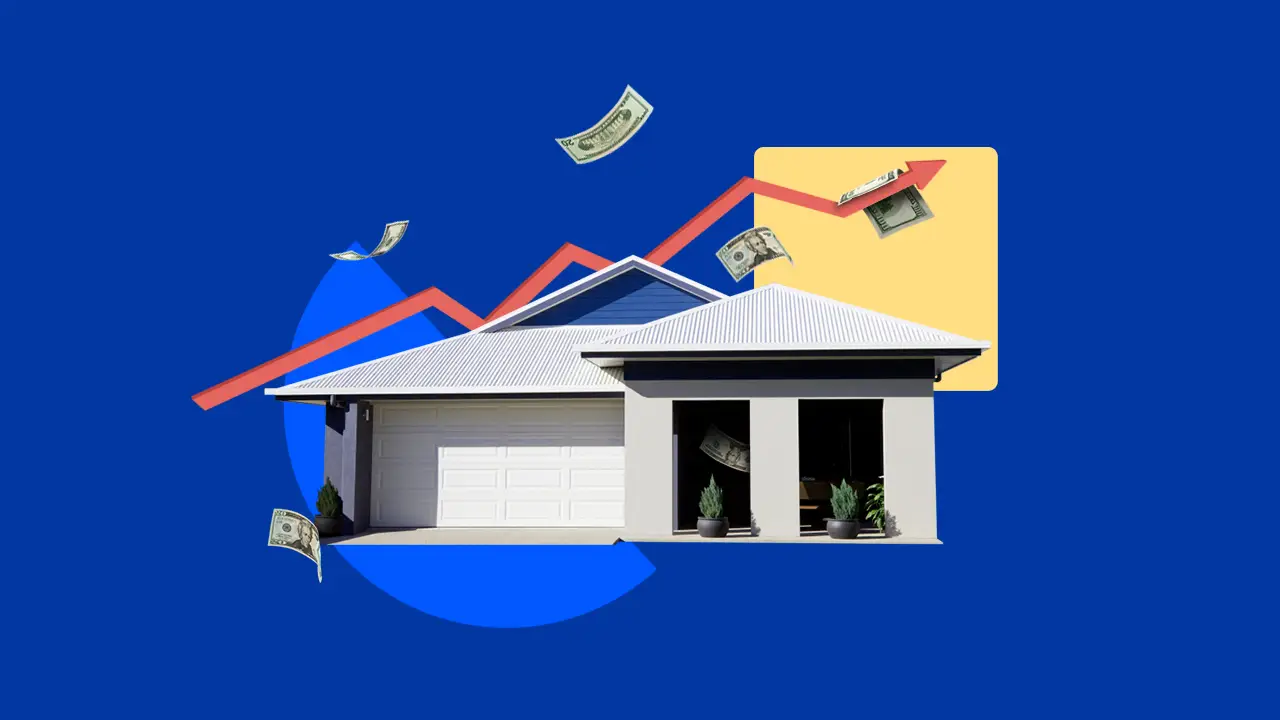Spring 2025 Housing Market Analysis: Record Costs & Economic Uncertainty Freeze Buyer Activity
Housing Market Cools as Consumer Confidence Wavers
The anticipated Spring 2025 homebuying season has failed to materialize as expected, with potential buyers largely remaining on the sidelines amid financial concerns and economic instability. Recent data shows mortgage purchase applications dropping 6% month-over-month, while Redfin's Homebuyer Demand Index remains essentially flat—indicating minimal growth in property tours and buying services.
This stagnation extends to pending home sales, which fell 2.8% year-over-year nationwide during the four-week period ending April 27. While the timing of Easter partially explains this decline (falling within this year's measurement period but not in 2024's comparable timeframe), the underlying trend shows a housing market struggling to gain momentum for the second consecutive spring season.
"The traditional spring rush we typically see in real estate has been replaced by cautious hesitation," says market analyst Eliza Johnson. "Buyers are weighing their options carefully, particularly given the significant financial commitment required in today's high-cost environment."
Record Housing Costs Create Significant Barrier to Entry
The primary factor suppressing buyer activity continues to be the unprecedented cost of homeownership. The median monthly housing payment has reached an all-time high of $2,870 nationwide—a figure that places homeownership beyond reach for many Americans.
This record payment threshold stems from a combination of:
- Persistently elevated mortgage rates (6.81% as of April 30)
- Continued home price appreciation despite economic headwinds
- Limited housing inventory in many desirable locations
- Wage growth that hasn't kept pace with housing costs
For perspective, a household would need an annual income exceeding $100,000 to comfortably afford the current median monthly payment—excluding other homeownership costs like insurance, taxes, and maintenance.
Economic Uncertainty Paralyzes Decision-Making
Beyond affordability concerns, broader economic uncertainty has emerged as a significant factor keeping potential buyers hesitant. Several factors contribute to this consumer wariness:
- Increased tariffs raising questions about future consumer goods pricing
- Growing recession concerns among economic forecasters
- Job market volatility in certain sectors
- Unpredictable interest rate movements after recent Federal Reserve actions
Bliss Ong, a Redfin Premier agent in Seattle, observes this hesitation firsthand: "A lot of people who would normally be making moves right now are standing still. They want to ride out this period of economic uncertainty and wait until they feel more secure to make this huge financial decision."
Ong also notes increased selectivity among those who are buying: "The people who are buying are picky; for instance, buyers aren't making offers if a home is on a busy street, or if it has one bathroom instead of two bathrooms. When the market was hotter, those homes would fly off the shelves despite not checking every single box."
Supply-Demand Imbalance Creates Market Shift
While buyer activity remains subdued, seller activity has increased notably. New listings are up 6.1% year-over-year, and total housing inventory has expanded by 13.7%—the smallest increase in over a year, but still significant.
This growing imbalance between supply and demand represents a potential market shift favoring buyers in many regions after years of seller advantage. The months of supply metric now stands at 4.1 months—approaching the 4-5 month range generally considered balanced market territory.
Other key indicators showing this market adjustment include:
- Homes selling above list price: 27.1% (down from 31% last year)
- Median days on market: 39 (increased by 5 days year-over-year)
- Average sale-to-list price ratio: 98.9% (down from 99.3%)
These metrics collectively indicate decreasing competition among buyers and weakening negotiating power for sellers in many markets.
Regional Market Variations Reveal Emerging Patterns
Despite the overall national trends, significant regional variations exist across metropolitan areas, revealing divergent market conditions:
Markets with Strongest Price Growth:
- Newark, NJ (+11.3%)
- Milwaukee (+10.3%)
- Cleveland (+7.6%)
- New Brunswick, NJ (+7.5%)
- Chicago (+7.3%)
Markets with Price Declines:
- Oakland, CA (-5%)
- San Antonio (-3.5%)
- Phoenix (-2.9%)
- Austin, TX (-2.5%)
- Jacksonville, FL (-2.3%)
The strongest pending sales growth appeared in Midwestern markets like Columbus, OH (+13.8%) and Warren, MI (+9.1%), while Florida markets experienced significant declines, with Miami (-23.8%), Fort Lauderdale (-19.5%), and West Palm Beach (-15.4%) showing the sharpest drops.
New listings surged in western and mid-Atlantic markets like Phoenix (+20.3%) and Washington, D.C. (+15.6%), signaling increased seller activity in these regions.
Market Insights: Expert Perspectives
What's driving the current hesitation among buyers?
Economic uncertainty combined with record-high housing costs has created a perfect storm of buyer hesitation. Many potential homebuyers are taking a "wait-and-see" approach, hoping for either price stabilization, lower interest rates, or greater economic certainty before making such a significant financial commitment.
Are we heading toward a buyer's market?
While conditions are slowly shifting to favor buyers in some regions, we're not yet in a full buyer's market nationally. The 4.1 months of supply indicates we're approaching balanced territory (typically 4-5 months), but market conditions vary significantly by location. Areas with rapidly increasing inventory and declining sales are moving more quickly toward buyer's market conditions.
When might mortgage rates decrease?
Mortgage rate predictions remain challenging, but many economists anticipate potential modest decreases later in 2025 if inflation continues to stabilize. However, these projections depend heavily on Federal Reserve policy decisions and broader economic conditions that remain fluid.
Which property types are performing best in the current market?
Move-in ready homes in desirable locations continue to perform relatively well despite market challenges. "Buyers have become extremely discerning," notes real estate economist Sarah Parsons. "Properties requiring significant updates or compromises face much steeper price reductions than in previous years, while turnkey properties in prime locations still command premium prices."
How should sellers adjust their expectations in this market?
Sellers need to recognize the shifting dynamics and price properties realistically from the outset. Homes priced too aggressively are sitting longer and often require multiple price reductions. Strategic improvements, professional staging, and flexibility on terms have become increasingly important in attracting today's selective buyers.
As we move deeper into 2025, the housing market appears to be at an inflection point. Whether current conditions represent a temporary pause or the beginning of a more significant market correction remains to be seen, but the combination of high costs and economic uncertainty continues to reshape buyer behavior in ways that may have lasting implications for residential real estate.













